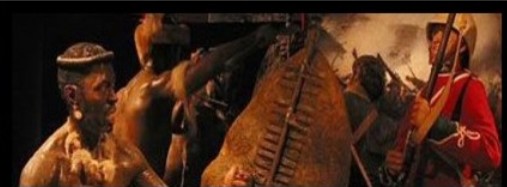| Latest topics | » The Pictorial World - March 15th 1879 Yesterday at 1:13 pm by ben2000 » The lost diary of Pvt James Owen Thu Jul 25, 2024 12:03 pm by miklew » Last of the 24th at Isandhlwana Wed Jul 24, 2024 6:16 pm by John Young » What was the uniform of field marshals/generals in the zulu war? Mon Jul 22, 2024 6:53 am by John Young » Henderson and the NNH at Rorke's Drift  Sat Jul 20, 2024 12:17 pm by SRB1965 » Capt. D. Hayes 1/3rd Regt., NNC Thu Jul 18, 2024 11:11 am by Julian Whybra » The Wrecked Camp Wed Jul 17, 2024 4:33 pm by Julian Whybra » Private N/N John Robert Branch 90th Regiment and his discovered diary Mon Jul 15, 2024 8:53 pm by 1879graves » Private John Scott 24th Regiment a fugitive at large Sun Jul 14, 2024 12:06 pm by 1879graves » 90th foot sgt T. Collins 214 Sun Jul 14, 2024 10:57 am by johnman » Baron Von Steitencron Wed Jul 10, 2024 3:10 pm by Julian Whybra » Sgt Joseph Windridge, Defender of Rorke's Drift - Memorial Tue Jul 09, 2024 3:15 am by 90th » Writing advice Sun Jul 07, 2024 4:04 pm by Julian Whybra » South Africa 1877-79, 1 clasp, 1877-8-9 (4389 Fr. Sergt. S. Smith. O/2. Bde. R.A.) Sun Jul 07, 2024 9:30 am by rai » The trashing of the Zulu monument to the brave warriors at Isandlawana March 12, 2024 has been blamed on scrap metal scavengers. Thu Jul 04, 2024 7:41 pm by ADMIN» The Goodwill Zulu Festival: Celebrating the Welsh and KwaZulu Natal Shared Heritage. Thu Jul 04, 2024 7:27 pm by ADMIN» Any nominal role of G Coy 2/24th regiment  Thu Jul 04, 2024 11:18 am by Wayne » Bassage Diary Thu Jul 04, 2024 9:31 am by Julian Whybra » Prior to Sihayo's Kraal  Thu Jul 04, 2024 9:19 am by 90th » British Fort Locations Thu Jul 04, 2024 3:40 am by 90th » Sergeant 1064 Tom Hick / Hicks G Company 2/24th Regiment Wed Jul 03, 2024 11:05 am by Julian Whybra » A Hungarian soldier in the Zulu War (?) Fri Jun 28, 2024 2:31 pm by Mr M. Cooper » Private 25B/279 Henry Sears Bugler E Company 24th Reg. KIA Isandlwana Thu Jun 27, 2024 1:07 pm by gardner1879 » Hamilton Browne's birthday Fri Jun 21, 2024 9:22 am by Julian Whybra » Zulu "Corps" Thu Jun 20, 2024 6:01 pm by Hobbes » Army Pay Department Personnel Thu Jun 20, 2024 11:49 am by Julian Whybra » Ntshingwayo birth date Sun Jun 16, 2024 11:37 am by Hobbes » Zibhebhu and Cetshwayo's family Wed Jun 05, 2024 9:11 pm by Julian Whybra » Smith's Store/Hotel Wed Jun 05, 2024 6:06 pm by Julian Whybra » Corporal James Frowen Williams F Company.  Tue Jun 04, 2024 5:20 pm by Julian Whybra » Shaka iLembe Sat Jun 01, 2024 1:27 pm by Jon84 » Bugler 1415 Thomas Finn / Flin 90th Regiment  Sat May 25, 2024 11:28 am by johnman » Inspector-General Evelyn Richard Hugh Pollard Tue May 14, 2024 10:13 am by ADMIN» Alfred Fairlie Henderson photographs. Sat May 11, 2024 8:01 am by Julian Whybra » Fairlie's Native Police Thu May 02, 2024 9:12 pm by Hobbes |
| July 2024 | | Mon | Tue | Wed | Thu | Fri | Sat | Sun |
|---|
| 1 | 2 | 3 | 4 | 5 | 6 | 7 | | 8 | 9 | 10 | 11 | 12 | 13 | 14 | | 15 | 16 | 17 | 18 | 19 | 20 | 21 | | 22 | 23 | 24 | 25 | 26 | 27 | 28 | | 29 | 30 | 31 | | | | |  Calendar Calendar |
|
| Top posting users this month | |
| New topics | » The Pictorial World - March 15th 1879 Yesterday at 1:13 pm by ben2000 » The lost diary of Pvt James Owen Thu Jul 25, 2024 12:03 pm by miklew » Last of the 24th at Isandhlwana Wed Jul 24, 2024 5:53 pm by miklew » What was the uniform of field marshals/generals in the zulu war? Sun Jul 21, 2024 12:30 pm by darthvaix » Henderson and the NNH at Rorke's Drift  Fri Jul 19, 2024 1:29 pm by SRB1965 » Capt. D. Hayes 1/3rd Regt., NNC Wed Jul 17, 2024 10:52 pm by Julian Whybra » The Wrecked Camp Sun Jul 14, 2024 8:51 am by 61MECH » The trashing of the Zulu monument to the brave warriors at Isandlawana March 12, 2024 has been blamed on scrap metal scavengers. Thu Jul 04, 2024 7:41 pm by ADMIN» The Goodwill Zulu Festival: Celebrating the Welsh and KwaZulu Natal Shared Heritage. Thu Jul 04, 2024 7:27 pm by ADMIN |
| Zero tolerance to harassment and bullying. | |
Due to recent events on this forum, we have now imposed a zero tolerance to harassment and bullying. All reports will be treated seriously, and will lead to a permanent ban of both membership and IP address.
Any member blatantly corresponding in a deliberate and provoking manner will be removed from the forum as quickly as possible after the event.
If any members are being harassed behind the scenes PM facility by any member/s here at 1879zuluwar.com please do not hesitate to forward the offending text.
We are all here to communicate and enjoy the various discussions and information on the Anglo Zulu War of 1879. Opinions will vary, you will agree and disagree with one another, we will have debates, and so it goes.
There is no excuse for harassment or bullying of anyone by another person on this site.
The above applies to the main frame areas of the forum.
The ring which is the last section on the forum, is available to those members who wish to partake in slagging matches. That section cannot be viewed by guests and only viewed by members that wish to do so. |
| Fair Use Notice | | Fair use notice.
This website may contain copyrighted material the use of which has not been specifically authorised by the copyright owner.
We are making such material and images are available in our efforts to advance the understanding of the “Anglo Zulu War of 1879. For educational & recreational purposes.
We believe this constitutes a 'fair use' of any such copyrighted material, as provided for in UK copyright law. The information is purely for educational and research purposes only. No profit is made from any part of this website.
If you hold the copyright on any material on the site, or material refers to you, and you would like it to be removed, please let us know and we will work with you to reach a resolution. |
| | | August Hammar Letter Dated 6th Jan 1879 |  |
|
+8Mr M. Cooper Dave littlehand impi Mr Greaves old historian2 Frank Allewell ADMIN 12 posters | | Author | Message |
|---|
ADMIN

Posts : 4354
Join date : 2008-11-01
Age : 65
Location : KENT
 |  Subject: August Hammar Letter Dated 6th Jan 1879 Subject: August Hammar Letter Dated 6th Jan 1879  Sun Sep 18, 2011 10:33 pm Sun Sep 18, 2011 10:33 pm | |
| August Hammar Letter Dated 6th Jan 1879 Part of the Anglo Zulu War society collection. Thought i would post this one seperately for now. Would be interested in your thought's, he says Witt is leaving tomorrow which would make that the 7th Jan 1879. [You must be registered and logged in to see this image.] |
|   | | Frank Allewell

Posts : 8572
Join date : 2009-09-21
Age : 77
Location : Cape Town South Africa
 |  Subject: Re: August Hammar Letter Dated 6th Jan 1879 Subject: Re: August Hammar Letter Dated 6th Jan 1879  Mon Sep 19, 2011 9:13 am Mon Sep 19, 2011 9:13 am | |
| We do know through various sources that Witt and Reynolds along with Rev Smith climbed Shiyane at 12.30 to see what was happening at isandlwana.
He left RD AFTER the construction of the barricades, he describes them and mentions the destruction of his 'wallpaper'.
When he left he took a sickly Lt with him, think it was Purvis of the NNC.
So no real question that he left on the 7th.
Regards
|
|   | | old historian2
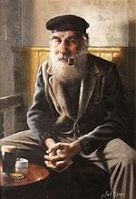
Posts : 1093
Join date : 2009-01-14
Location : East London
 |  Subject: Re: August Hammar Letter Dated 6th Jan 1879 Subject: Re: August Hammar Letter Dated 6th Jan 1879  Mon Sep 19, 2011 10:14 am Mon Sep 19, 2011 10:14 am | |
| But could "Hammar" have been confused with "Witt" And It was Hammar who was at the Mission station and not Witt. Meaning Witt vacated on the 6th. |
|   | | Frank Allewell

Posts : 8572
Join date : 2009-09-21
Age : 77
Location : Cape Town South Africa
 |  Subject: Re: August Hammar Letter Dated 6th Jan 1879 Subject: Re: August Hammar Letter Dated 6th Jan 1879  Mon Sep 19, 2011 11:10 am Mon Sep 19, 2011 11:10 am | |
| OH
Doubt it, Witt was well known firstly and secondly part of his conversation with I think Surgeon Reynolds is on record of him exclaiming that he must get to his wife and children.
Difficult to explain the letter.
Its written in a strange format, almost akin to someone scribbling pencil notes over a period of a few days. But would someone feed paper into a typewriter type a sentence then leave it for a few days before typing another sentence?
Its almost as if someone was working from memory and hiting point notes?
Strange |
|   | | Mr Greaves

Posts : 747
Join date : 2009-10-18
 |  Subject: Re: August Hammar Letter Dated 6th Jan 1879 Subject: Re: August Hammar Letter Dated 6th Jan 1879  Mon Sep 19, 2011 11:16 am Mon Sep 19, 2011 11:16 am | |
| Otto Witt, was a bit of a scallywag, perhaps he claimed to be there just as he claimed to had stayed at Rorke’s Drift of course that was after he took part in the Battle of Isandlwana. PS. Who is August Hammar  Do we have any infoe: on him elsewhere on the forum. |
|   | | Frank Allewell

Posts : 8572
Join date : 2009-09-21
Age : 77
Location : Cape Town South Africa
 |  Subject: Re: August Hammar Letter Dated 6th Jan 1879 Subject: Re: August Hammar Letter Dated 6th Jan 1879  Mon Sep 19, 2011 11:45 am Mon Sep 19, 2011 11:45 am | |
| Hi Mr G
No doubt Witt was there, he is mentioned by to many people, from Chard down to rev Smith.
Hammar doesnt come in for to much comment, dont have access to the books at present so cant give details of him.
regards |
|   | | impi

Posts : 2308
Join date : 2010-07-02
Age : 44
 |  Subject: Re: August Hammar Letter Dated 6th Jan 1879 Subject: Re: August Hammar Letter Dated 6th Jan 1879  Mon Sep 19, 2011 12:39 pm Mon Sep 19, 2011 12:39 pm | |
| Interesting to see, that fortifications at RD was started on the 6th Jan. |
|   | | littlehand
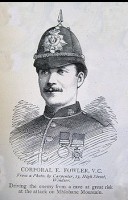
Posts : 7076
Join date : 2009-04-24
Age : 55
Location : Down South.
 |  Subject: Re: August Hammar Letter Dated 6th Jan 1879 Subject: Re: August Hammar Letter Dated 6th Jan 1879  Mon Sep 19, 2011 12:50 pm Mon Sep 19, 2011 12:50 pm | |
| [You must be registered and logged in to see this image.]" August was the eldest son of Elin Jakobina Ask and August Hammar, a grand-son of Maria Lovisa Hjelms. Born in Lund in 1856, he was educated at the Helsingborg High School and matriculated in June 1874. He then entered the Helsingborg Teknologiska Institutet, and graduated as a civil engineer in 1877 with a distinction in mathematics and was awarded the George Medal. One of his summer vacations was spent as a pupil engineer during the construction of the railway between Landskrona and Ängelholm.
To South Africa
A year later he decided to emigrate to the British colony of Natal in South Africa. Writing to his parents on 13 October 1878 from London, he said "On 15 October I am embarking on the steamer Balmoral Castle, a sturdy boat of almost 3000 tons, leaving from the West India Docks". Then in a letter in November he referred to the impending clash between British and Zulu forces: "... when I came to Durban, I found the situation very bad ... it would cost 15 to 20 pounds to go to Potchefstroom by post cart, carrying just a night bag. Even by ox wagon would be beyond means ... I couldn't stay in Port Natal (Durban) as I had not a penny ... after much discussion I decided to go first to Oskarsberg ..." (the Swedich Church Mission near Rorke's Drift in Northern Natal, under the Rev. Otto Witt). August walked 270 miles with an injured leg, and was met by Otto Witt. August wrote: "Otto said 'Greetings! August' ..... he had received notification of my arrival .... we mounted horses and immediately galloped to Oskarsberg ..... we made 20 kilometres in one and a half hours."
The imminent outbreak of hostilities between British and Zulu armies forced the Swedish family to abandon the mission at Rorke's Drift and August made his own way into the nearby hills. On 22 January 1879, he observed the activity of the Battle of Isandhlwana at a distance of five to six miles. This battle was one of the greatest defeats of the British army. Whilst trying to return to the Mission, he was cut off by a Zulu impi (regiment) and spent the night in the hills watching the epic resistance of the British forces at Rorke's Drift. Thus August Hammar on his arrival in Natal was unexpectedly connected with major events in its history. He sketched the scene of the battle at Isandlawana, and later the scene of the death of the French Prince Imperial in June 1879. This painting was later sent to his mother Empress Eugenie, the widow of Louis Napoleon. August became a member of Baker's Horse, a volunteer mounted regiment, and was with them in July 1879 at the defeat of the Zulu armies at Ulundi in Zululand.
Explorer
After the Zulu war, August decided on a career of surveying, and trained with a surveyor in Verulam, Natal. In 1881 he practised as a surveyor and in 1883 he purchased a small farm near Rorke's Drift, from which he continued his practice. There he met a Dr Aurel Schultz. Together they planned a journey northwards to the Victoria Falls and then westwards to the Okavango marshlands. They left Dundee in Natal on 2 March 1884 on foot, with their baggage in a two-wheel ox cart. August's equipment included a sextant, artificial horizon, magnetic compass, thermometers and the only naval chronometer available in Natal at the time (this chronometer when last tested in January 1997 still kept very good time, with an accuracy of 0.3 seconds per day!). Over the next ten and a half months, they walked about 2,700 miles (4,300 km), visiting the Victoria Falls (about 20 years after Livingstone's discovery) and the origins of the Chobe River. August's detailed maps of the region were the first to be made of this part of Africa, and his drawings and paintings were used to illustrate "The New Africa" (Schultz & Hammar, Heinemann 1888). August resumed his surveying practice in early 1885.
Marriage
In July 1886, he married Elizabeth Lamb, daughter of an Englishman who had arrived in Port Natal in 1860. Their first daughter Elin was born at Rorke's Drift in 1887. The family then moved to Pietermaritzburg, the capital of Natal, and two sons, Holger and Augustus, and their second daughter Elsie, were born there in 1888, 1890 and 1892 respectively.
Surveyor
In 1890, August was appointed as Government Surveyor, and over the next 25 years was responsible for most of the primary and secondary surveying of Natal. This included the politically important survey of the Zululand-Transvaal boundary during 1893. In 1910 he collaborated with the British Navy in a survey of the coastline of Natal and Zululand. He retired on pension in about 1922, but was still active in surveying for much of the rest of his life. His contribution to the surveying of Natal is well documented, as is his training of young surveyors in Southern Africa. As an indication of August's dedication to his profession, it is recorded that the then Surveyor General named a farm between Durban and Pietermaritzburg "Hammarsdale"; today it is an important industrial area.
Contact with Sweden
During the Anglo-Boer war (1897-1901), his younger brother Josef, a doctor attached to the Swedish Red Cross mission to the Boer army, was able to meet August briefly in South Africa. Josef was a member of the party sent to look for traces of Andre's ill-fated expedition to the North Pole by balloon in 1905; Josef sent some mementoes of this trip to his brother August, including a polar bear skin with mounted head, which was later exhibited for many years in the Natal Museum in Pietermaritzburg.
In 1901, August made his only return visit to Sweden, travelling by ship up the East coast of Africa through the Suez Canal to Italy, and then by train to Sweden. His parents had moved to Nosaby near Kristianstad, where his father August was now the priest. On his arrival, August wrote to his wife in Pietermaritzburg: "My dearest Liz ... my reception was the heartiest you can imagine ... I have never seen such a pleasant home as that of my parents ...". He met most of the members of his family during this visit, including Josef, his sisters Bina and Eva, and their families. This was his last direct contact with his family in Sweden, for his father and mother died in 1905 and 1911 respectively.
[You must be registered and logged in to see this image.]
Artist
Apart from his career as a surveyor, August is best remembered as an accomplished landscape artist. He started painting, using water colours and oils, as a young man in Sweden, and he continued producing outstanding paintings right up until 1930. His early paintings were of the landscape of Northern Natal during the Zulu wars; then there was the series painted during his journey to Central Africa with Schultz; these were followed by a large number of paintings devoted to central Natal and the coast. All his paintings are in the hands of the family, apart from one he gave to his pupil James Steere. He was very retiring in nature, and refused to exhibit his paintings. However during his absence in Sweden in 1901, his wife Elisabeth exhibited four of her husband's paintings in Pietermaritzburg, under the name of "Mr Dauber"; these paintings took the first four prizes! August was an accomplished landscape photographer as well; unfortunately most of the negatives have been lost and his photographs survive mainly in family albums, in South Africa and Sweden."
[You must be registered and logged in to see this image.] |
|   | | Dave

Posts : 1603
Join date : 2009-09-21
 |  Subject: Re: August Hammar Letter Dated 6th Jan 1879 Subject: Re: August Hammar Letter Dated 6th Jan 1879  Mon Sep 19, 2011 2:26 pm Mon Sep 19, 2011 2:26 pm | |
| - Quote :
- On 22 January 1879, he observed the activity of the Battle of Isandhlwana at a distance of five to six miles. This battle was one of the greatest defeats of the British army. Whilst trying to return to the Mission, he was cut off by a Zulu impi (regiment) and spent the night in the hills watching the epic resistance of the British forces at Rorke's Drift. Thus August Hammar on his arrival in Natal was unexpectedly connected with major events in its history.
Did he leave an account of what he witnessed. If yes can someone point me in the right direction. Mind you would he have seen much at 6 miles. What with the smoke ect. I wonder if he saw the eclispe.  How far was Milne when he was trying to observe the goings on at Isandlwana through a telescope. |
|   | | littlehand

Posts : 7076
Join date : 2009-04-24
Age : 55
Location : Down South.
 |  Subject: Re: August Hammar Letter Dated 6th Jan 1879 Subject: Re: August Hammar Letter Dated 6th Jan 1879  Thu Jun 14, 2012 11:06 pm Thu Jun 14, 2012 11:06 pm | |
| |
|   | | Mr M. Cooper
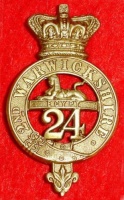
Posts : 2591
Join date : 2011-09-29
Location : Lancashire, England.
 |  Subject: August Hammer Letter Dated 6th Jan 1879. Subject: August Hammer Letter Dated 6th Jan 1879.  Fri Jun 15, 2012 12:34 am Fri Jun 15, 2012 12:34 am | |
| Hi LH. Many thanks for the link mate, very interesting. Martin.  |
|   | | Frank Allewell

Posts : 8572
Join date : 2009-09-21
Age : 77
Location : Cape Town South Africa
 |  Subject: Re: August Hammar Letter Dated 6th Jan 1879 Subject: Re: August Hammar Letter Dated 6th Jan 1879  Fri Jun 15, 2012 7:54 am Fri Jun 15, 2012 7:54 am | |
| John
I will send a couple of photos to admin, milnes view and also Hammers view from 6miles ( 10 Kilometers )
Cheers |
|   | | ADMIN

Posts : 4354
Join date : 2008-11-01
Age : 65
Location : KENT
 |  Subject: Re: August Hammar Letter Dated 6th Jan 1879 Subject: Re: August Hammar Letter Dated 6th Jan 1879  Fri Jun 15, 2012 11:35 am Fri Jun 15, 2012 11:35 am | |
| [You must be registered and logged in to see this image.]Photo 1) This a photo taken of the Oskarberg from 10Kilometers away and is what August Hammer would have seen. [You must be registered and logged in to see this image.]Photo 2) Is the approximate view Milne would have had of the camp through his telescope a touch earlier in the day. Photos and text by Springbok. |
|   | | 90th
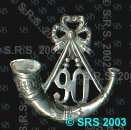
Posts : 10890
Join date : 2009-04-07
Age : 68
Location : Melbourne, Australia
 |  Subject: August Hammar Letter Dated 6 /1 / 79. Subject: August Hammar Letter Dated 6 /1 / 79.  Fri Jun 15, 2012 11:46 am Fri Jun 15, 2012 11:46 am | |
| Thanks for posting the photo's pete and also to Springbok for taking them and sending them along .  Cheers 90th.  |
|   | | John
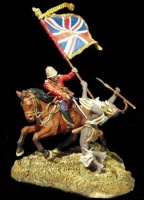
Posts : 2558
Join date : 2009-04-06
Age : 61
Location : UK
 |  Subject: Re: August Hammar Letter Dated 6th Jan 1879 Subject: Re: August Hammar Letter Dated 6th Jan 1879  Fri Jun 15, 2012 6:08 pm Fri Jun 15, 2012 6:08 pm | |
| Springbok thanks for the photos, regarding Milnes view is this looking at the front of the camp.
If it was possible a good excercise would be to take Milnes original telescope and take an image through that. I do believe hs telescope is in some museum. Just a thought. |
|   | | Frank Allewell

Posts : 8572
Join date : 2009-09-21
Age : 77
Location : Cape Town South Africa
 |  Subject: Re: August Hammar Letter Dated 6th Jan 1879 Subject: Re: August Hammar Letter Dated 6th Jan 1879  Sat Jun 16, 2012 8:02 am Sat Jun 16, 2012 8:02 am | |
| Hi John
This photo was taken with a 200mm lens to simulate the view Milne would have got using his telescope so its about as close as you will get.
Would love to get my hands on Milnes telescope.
Cheers Mate |
|   | | Mr M. Cooper

Posts : 2591
Join date : 2011-09-29
Location : Lancashire, England.
 |  Subject: August Hammer Letter Dated 6th Jan 1879. Subject: August Hammer Letter Dated 6th Jan 1879.  Sat Jun 16, 2012 11:53 am Sat Jun 16, 2012 11:53 am | |
| Hi springbok. Great pictures, isn't it odd how the hill looks different from Hammers viewpoint. Thanks for sharing them. Cheers buddy.  |
|   | | littlehand

Posts : 7076
Join date : 2009-04-24
Age : 55
Location : Down South.
 |  Subject: Re: August Hammar Letter Dated 6th Jan 1879 Subject: Re: August Hammar Letter Dated 6th Jan 1879  Tue Feb 26, 2013 11:05 pm Tue Feb 26, 2013 11:05 pm | |
| |
|   | | Stefaan
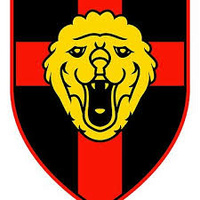
Posts : 59
Join date : 2023-09-11
Age : 60
Location : Bruges, Belgium
 |  Subject: Hammar wrote to his parents on 03th of march 1879 Subject: Hammar wrote to his parents on 03th of march 1879  Tue Feb 13, 2024 10:03 am Tue Feb 13, 2024 10:03 am | |
| August Hammar joined Baker's horse and he wrote a letter to his parents on the 3th of march 1879.
This letter appeared in the Swedish book:"Utanför läget, En berättelse om missionären och evangelisten Otto Witt"
This book appeared in 2017 and was written by Roland Gäreskog.
I have translated it in English: On page 103 of the book:
Hammar joined the British forces in Durban, namely
Baker's Light Horse. On March 27 he wrote to his parents:
Now I am a volunteer in the Zulu War with the cavalry corps "Bakers
Light Horse". My comrade is a Swede, Wennermark, who
met Otto Witt in Durban before he left. We are currently in a
small town in Transvaal, Utrecht, not far from the land of the Zulus.
Today we will attempt to break through a 10,000-strong
Zulus force that has surrounded the city and join
Colonel Wood's column. I've been on watch all night
in the pouring rain, so I'm very awake and finding it hard to
write. I have long forgotten what it means to
sleep under a roof and eat decently. But I am healthy and in good
spirits. I see everyone getting ready for business, so I have to
do the same. Greetings to all from your devoted son August. [...] Now
there is a "fall in" so I have to stop (AHa 27/3 1879)[/i]
I did find his "comrade" Wennermark in the book "For God, Queen and Colony" by Terry Sole with Baker's Horse but Hammar was not mentionned. |
|   | | 90th

Posts : 10890
Join date : 2009-04-07
Age : 68
Location : Melbourne, Australia
 |  Subject: August Hammar Letter dated 6th Jan 1879 Subject: August Hammar Letter dated 6th Jan 1879  Wed Feb 14, 2024 12:53 am Wed Feb 14, 2024 12:53 am | |
| Hi Stefaan. I Checked in ' For God , Queen and Colony ' by Terry Sole ... and I believe it's quite possible that Augusius Hamman listed in the Baker Horse Roll is August Hammar ? . As we know the Rolls are not 100% accurate when it comes to Spelling etc etc . 90th  |
|   | | Stefaan

Posts : 59
Join date : 2023-09-11
Age : 60
Location : Bruges, Belgium
 |  Subject: Re: August Hammar Letter Dated 6th Jan 1879 Subject: Re: August Hammar Letter Dated 6th Jan 1879  Wed Feb 14, 2024 10:20 am Wed Feb 14, 2024 10:20 am | |
| Hello 90th,
You are probably right about this. |
|   | | 90th

Posts : 10890
Join date : 2009-04-07
Age : 68
Location : Melbourne, Australia
 |  Subject: August Hammar Letter dated 6th Jan 1879 Subject: August Hammar Letter dated 6th Jan 1879  Wed Feb 14, 2024 11:31 am Wed Feb 14, 2024 11:31 am | |
| Hi Stefaan Hopefully Mate , hopefully   90th  |
|   | | Julian Whybra
Posts : 4021
Join date : 2011-09-12
Location : Billericay, Essex
 |  Subject: Re: August Hammar Letter Dated 6th Jan 1879 Subject: Re: August Hammar Letter Dated 6th Jan 1879  Wed Feb 21, 2024 5:08 pm Wed Feb 21, 2024 5:08 pm | |
| After the war, when Hammar had trained and practised as a surveyor, explored and mapped the area northwards as far as Victoria Falls, he used his drawings and paintings to illustrate Schultz, Dr. Aurel and Hammar, August, The New Africa, (Heinemann, London, 1st ed. 1888, 2nd ed. 1897).
A photograph and full biography by a descendant may be found in Hathorn, Michael, ‘Swedish Land Surveyor in Natal: August Hammar (1856-1931)’, Hjelmaren, (Växjö, June 1997), no. 41.
(From 'England's Sons', p. 24) |
|   | | Stefaan

Posts : 59
Join date : 2023-09-11
Age : 60
Location : Bruges, Belgium
 |  Subject: Re: August Hammar Letter Dated 6th Jan 1879 Subject: Re: August Hammar Letter Dated 6th Jan 1879  Thu Feb 22, 2024 8:34 pm Thu Feb 22, 2024 8:34 pm | |
| Very interesting indeed the life and times of August Hammar. It is always interesting to read about people who moved
on the edge of "great events" Another such person is Berhard Kraft, the german farmer who was granted power of attorney by Witt (whilst he was back in Sweden), in matters concerning Oscarsberg. Kraft was in fact back in Rorke's Drift on the 17th of february 1879. From here he wrote a letter to Witt describing the situation at that time. Once Witt was back (august 1880) he helped him with the rebuilding of Rorke's Drift.
|
|   | | | | August Hammar Letter Dated 6th Jan 1879 |  |
|
Similar topics |  |
|
| | Permissions in this forum: | You cannot reply to topics in this forum
| |
| |
| |
